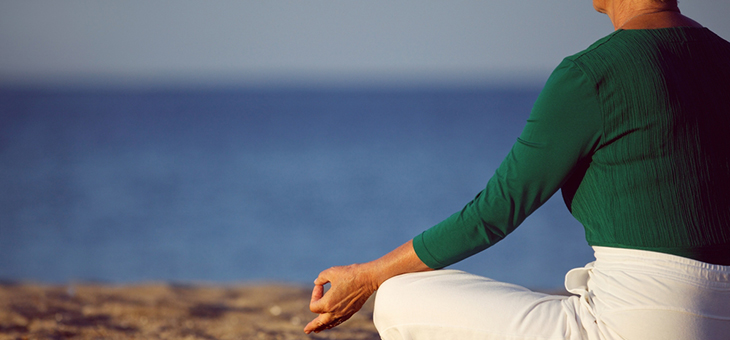In the hustle and bustle of modern life, finding a moment of tranquillity can seem like a distant dream. But what if the key to unlocking inner peace was already within your grasp? Meditation, a practice as ancient as time, is gaining renewed attention as a powerful tool for enhancing well-being, especially among the over 50s who are looking to enrich their golden years with serenity and mindfulness.
The journey into meditation often begins with a misconception: the idea that to meditate successfully, one must completely empty the mind of thoughts. Renowned meditation teacher and author Sharon Salzberg dispels this myth, emphasising that meditation is not about achieving a blank mind but rather about changing our relationship with our thoughts. It’s about cultivating a balanced awareness that allows us to observe our thoughts without being carried away by them.
You May Like
It’s no secret that sitting with our thoughts can be daunting. A study from the University of Virginia revealed that many individuals would prefer a mild electric shock over sitting alone in silence for 15 minutes. Yet, the rewards of overcoming this discomfort are profound. Dr Richard Davidson, founder of the Centre for Healthy Minds, asserts that regular meditation can rewire the brain’s networks, leading to lasting improvements in emotional regulation and executive function.
One of the most encouraging aspects of meditation is its accessibility. ‘The only thing you need is your own mind,’ says Davidson. There’s no need for elaborate setups or extended periods of time. Whether it’s a brief five-minute session or a longer 15-minute practice, the best meditation is the one that you will consistently perform. Salzberg suggests using an alarm to free yourself from the distraction of timekeeping during your practice.
When it comes to posture, comfort is paramount. Salzberg reassures us that there’s no need for complex yoga poses; sitting comfortably with an upright back, whether in a chair or on a cushion, is sufficient. Kaira Jewel Lingo, a meditation and mindfulness teacher, advises finding a natural hand position and ensuring your head and neck are aligned with your spine.
As you settle into your meditation, Lingo encourages practitioners to simply notice the present sensations, whether it’s the feel of your feet on the ground, the chair supporting you, or any other physical experience. Observing your thoughts and emotions without judgment is a core aspect of mindfulness.
Focusing on the breath is a fundamental meditation technique. Salzberg recommends locating where the breath is most noticeable—be it the nostrils, chest, or abdomen—and resting your attention there. The simple act of feeling one breath can be a powerful focal point.
It’s natural for thoughts to wander during meditation, but this isn’t a sign of failure. Salzberg reassures us that the act of recognising our wandering mind and gently returning to the breath is the very skill we’re developing through meditation.
For those who find solace in meditation and wish to delve deeper, a wealth of resources is available. Books, podcasts, YouTube videos, apps, and both in-person and online communities can offer guidance and support. Exploring different meditation styles, such as walking meditation, transcendental meditation, or loving-kindness meditation, can enrich your practice.
As you progress, having a guide or mentor can be invaluable. They serve as a reminder that meditation is not about perfectionism or blocking thoughts but about embracing the moment with kindness and awareness.
How has meditation influenced your daily routine? Do you have a preferred technique or any tips for beginners? Feel free to share your thoughts and experiences in the comments below—we’d love to hear from you!
Also read: Can meditation help protect your brain as you age?

